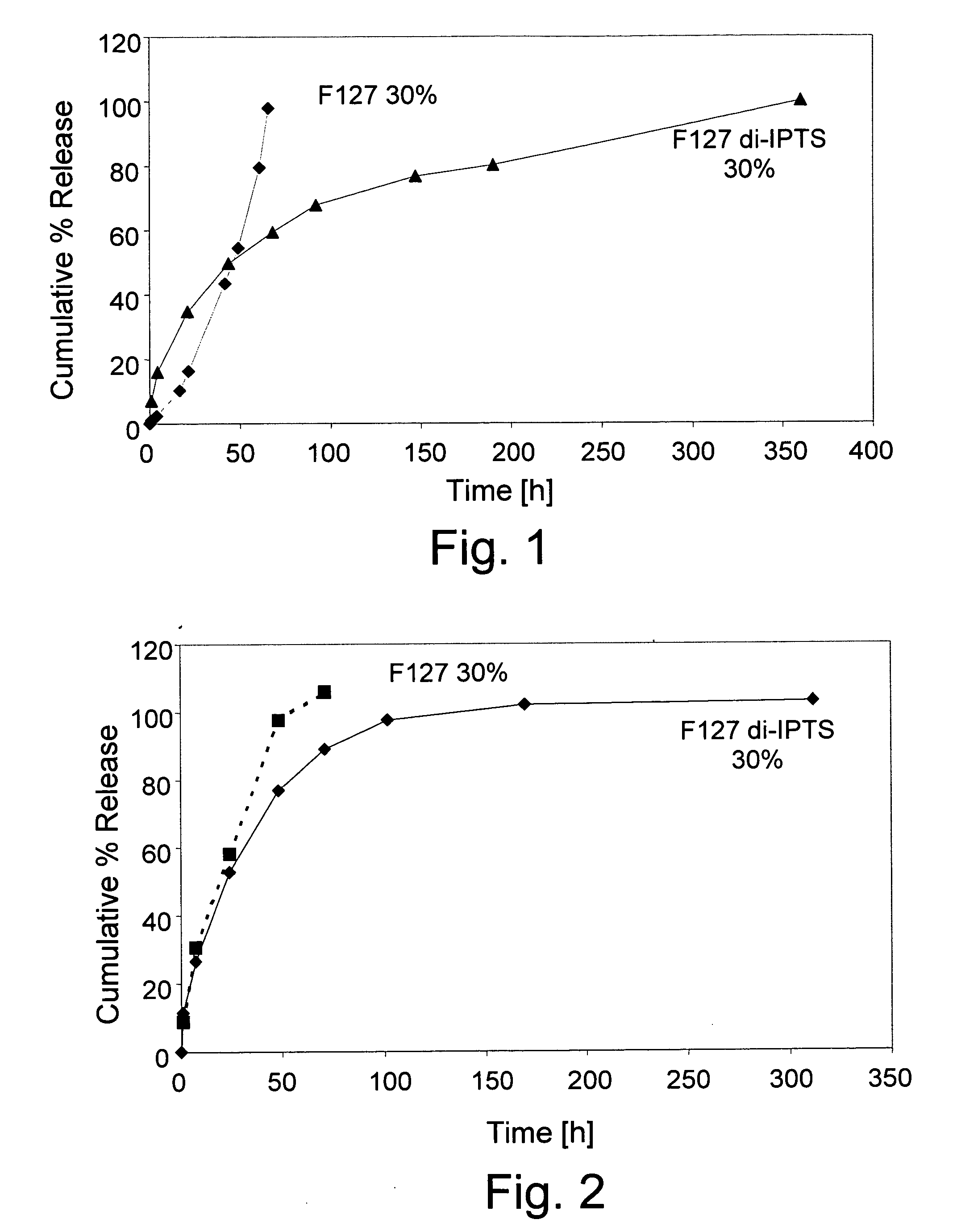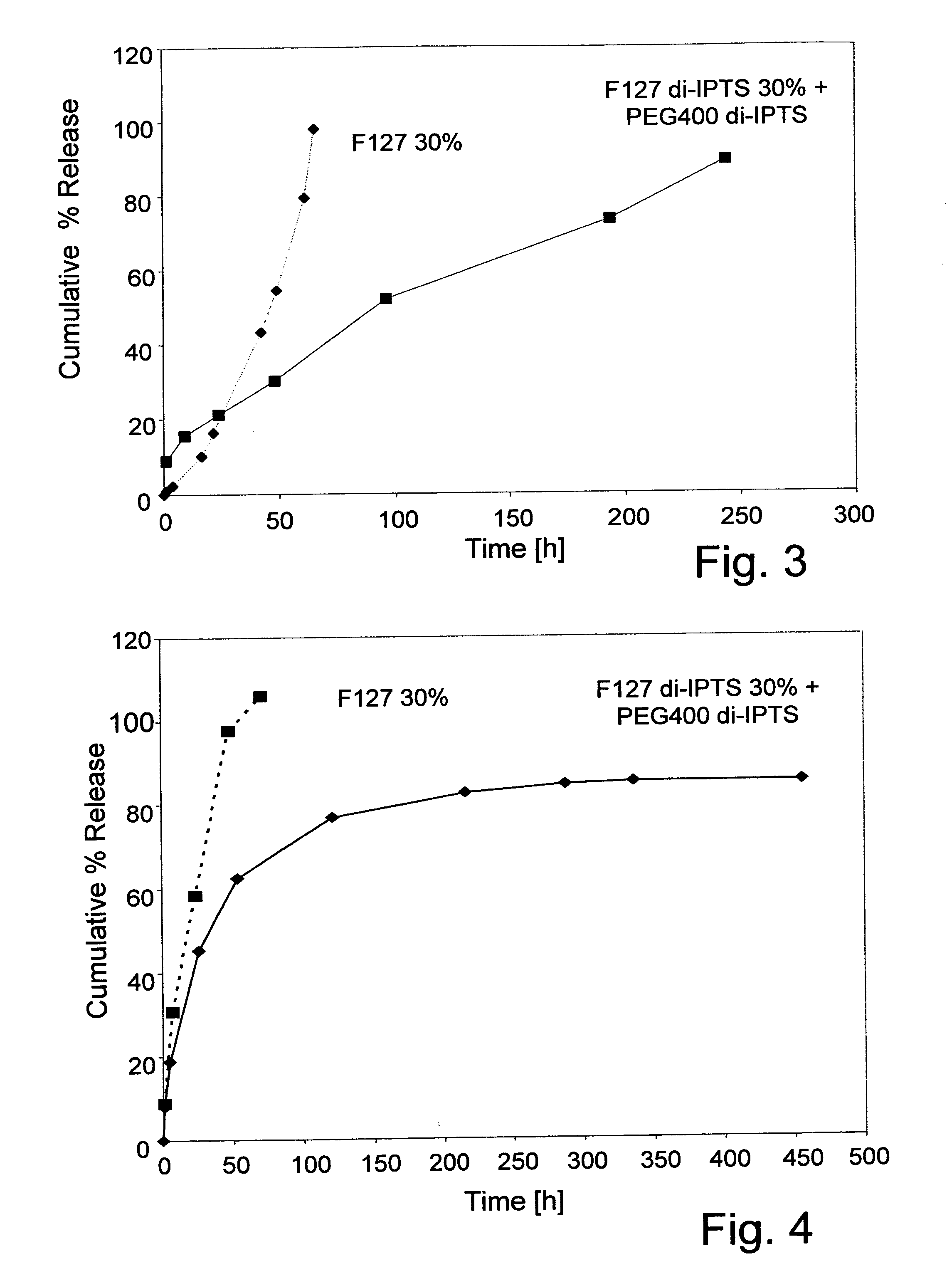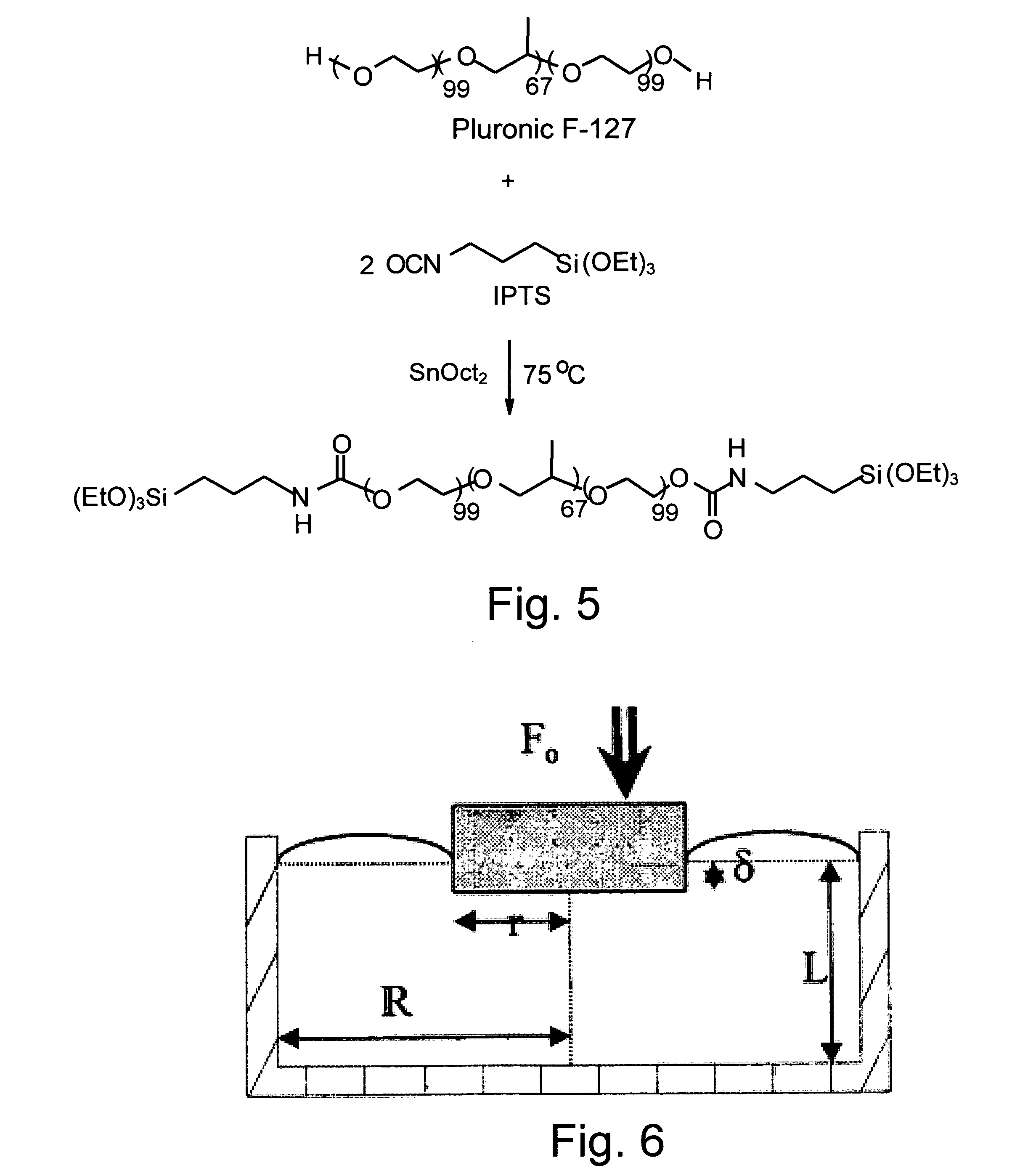Responsive polymeric system
a polymer system and polymer technology, applied in the field of organicinorganic environmentally responsive polymer systems, can solve the problems of non-biodegradability of poly(n-isopropyl acrylamide), limited application, unsuitable non-invasive surgical procedures,
- Summary
- Abstract
- Description
- Claims
- Application Information
AI Technical Summary
Problems solved by technology
Method used
Image
Examples
example 1
Pluronic F127 di-(3-isocyanatopropyl)triethoxysilane (F127 di-IPTS)
[0061] a) Synthesis of F127 di-IPTS
[0062] 25.2 g (0.002 mol) Pluronic F127 (molecular weight 12,600) were poured in a three-necked flask and dried at 120° C. under vacuum for 2 hours. Then, 1.2 g (0.005 mol) IPTS and 0.1 g (3.10−4 mol) SnOct2 were added to the reaction mixture and reacted at 80° C. for one hour, under mechanical stirring (160 rpm) and a dry nitrogen atmosphere. The polymer produced was dissolved in chloroform (30 ml) and precipitated in petroleum ether 40-60 (400 ml). Finally, the F127 derivative was washed repeatedly with portions of petroleum ether and dried in vacuum at RT. The synthesis is presented in Scheme 1 (see FIG. 5).
[0063] b) Polymerization of F127 di-IPTS
[0064] F127 di-IPTS was dissolved in water-based solvent in different concentrations and the solutions were incubated at 37° C. The polymerization process includes two stages. The first comprises the ethoxysilane group hydrolysis to ...
example 2
Pluronic F38 di-(3-isocyanatopropyl)triethoxysilane (F38 di-IPTS)
[0079] a) Synthesis of F38 di-IPTS
[0080] 20.1 g (0.004 mol) Pluronic F38 (molecular weight 4,600) were poured in a three-necked flask and dried at 120° C. under vacuum for 2 hours. Then, 2.6 g (0.01 mol) IPTS and 0.2 g (3.10−4 mol) SnOct2 were added to the reaction mixture and reacted at 80° C. for one hour, under mechanical stirring (160 rpm) and a dry nitrogen atmosphere. The polymer produced was dissolved in chloroform (30 ml) and precipitated in petroleum ether 40-60 (400 ml). Finally, the F38 derivative was washed repeatedly with portions of petroleum ether and dried in vacuum at RT.
[0081] b) Polymerization of F38 di-IPTS
[0082] A 40% F38 di-IPTS solution in PBS was incubated at 37° C. to obtain a crosslinked gel.
example 3
Poly(ethylene glycol) MW=400 di-(3-isocyanatopropyl)triethoxysilane (PEG400 di-IPTS)
[0083] 5.1 g (0.013 mol) PEG400 were poured in a three-necked flask and dried at 120° C. under vacuum for 1 hours. Then, 7.6 g (0.019 mol) IPTS and 1.5 g (0.004 mol) SnOct2 were added to the reaction mixture and reacted at 80° C. for one hour, under mechanical stirring (160 rpm) and a dry nitrogen atmosphere. The polymer produced was dissolved in chloroform (30 ml) and precipitated in petroleum ether 40-60 (400 ml). Finally, the PEG400 di-IPTS was washed repeatedly with portions of petroleum ether and dried in vacuum at RT. Whereas the material was a liquid at 37° C., after incubation at this temperature a brittle and transparent film was formed.
PUM
| Property | Measurement | Unit |
|---|---|---|
| pH | aaaaa | aaaaa |
| temperature | aaaaa | aaaaa |
| temperature | aaaaa | aaaaa |
Abstract
Description
Claims
Application Information
 Login to View More
Login to View More - R&D
- Intellectual Property
- Life Sciences
- Materials
- Tech Scout
- Unparalleled Data Quality
- Higher Quality Content
- 60% Fewer Hallucinations
Browse by: Latest US Patents, China's latest patents, Technical Efficacy Thesaurus, Application Domain, Technology Topic, Popular Technical Reports.
© 2025 PatSnap. All rights reserved.Legal|Privacy policy|Modern Slavery Act Transparency Statement|Sitemap|About US| Contact US: help@patsnap.com



